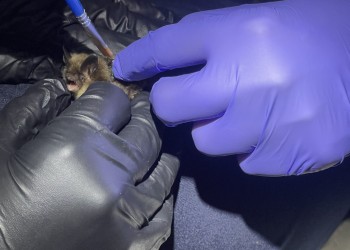Partnerships
The Black Hills National Forest has a strong commitment to working with our partners and surrounding community. The forest had developed long-standing partnerships and working relationships with tribal governments, state government, other federal agencies, local businesses, civic organizations, universities, and many more
Cooperators
- Bureau of Indian Affairs
- National Park Service
- Bureau of Land Management
- U.S. Geological Survey
- U.S. Fish & Wildlife Service
- Bureau of Recreation
- Department of Transportation
- Department of Corrections
- Game, Fish & Parks
- Custer State Park
- Division of Wildland Fire
- Division of Recreation
- Department of Tourism
- National Guard
- Wyoming State Forestry
- Wyoming Department of Corrections
- Department of State Parks and Cultural Resourc
- Pennington County
- Meade County
- Lawrence County
- Crook County
- Custer County
The Black Hills National Forest works closely with around 16 tribes throughout the area.
They include:
- Cheyenne River Sioux Tribe (SD)
- Cheyenne/Arapaho Tribes Of Oklahoma (OK)
- Crow Creek Sioux Tribe (SD)
- Eastern Shoshone Tribe (WY)
- Flandreau Santee Sioux Tribe (SD)
- Lower Brule Sioux Tribe (SD)
- Mandan, Hidatsa & Arikara Nation (ND)
- Northern Arapaho Tribe (WY)
- Northern Cheyenne Tribe (MT)
- Oglala Lakota Nation (SD)
- Rosebud Sioux Tribe (SD)
- Santee Sioux Nation (NE)
- Sisseton-Wahpeton Sioux Tribe (SD)
- Spirit Lake Sioux Tribe (ND)
- Standing Rock Sioux Tribe (ND)
- Yankton Sioux Tribe (SD)
- Rocky Mountain Elk Foundation
- Pacer Mining Corporation
- Batworks L.L.C.
- Paha Sapa Grotto
- Black Hills Parks & Forests Association
- Forest Recreation Management
- Yamaha Motor Sports
- Black Hills State University
- Colorado State University
- Pine Ridge High School
- Little Wound High School
- Lead/Deadwood School District
It is not only individuals who assist their national forest, but organized groups as well. Groups have volunteered to pick up trash, clean up damaged recreational areas, renovate trails, and much more!
Below are examples of some of our volunteer partner groups who have contributed their time to make the Black Hills National Forest a better place for all to enjoy.
- Norbeck Society
- Black Hills Backcountry Horsemen of South Dakota
- South Dakota Off-Road vehicle Coalition
- Off-Road Riders Motorcycle and ATV Club
- Black Hills Jeeps
- Sundance Chain Gang
- Ridge Riders Mountain Bike Club
- Black Hills Trails
- Eagle Cliff Ski Club
- Black Hills Nordic Ski Club
- Black Hills Geocachers
- Lutheran Outdoors
- Black Hills Rehabilitation Hospital
- Black Hills Area Chapter of Boy Scouts of America
Partner Success Story
The northern long-eared bat is a endangered species found within the Black Hills National Forest. The northern long-eared bat roosts within dead and alive trees during the summer months, and inhabits caves and mines during the winter. South Dakota State University and Black Hills National Forest are partnering together to identify the roosting habitat for the species and understand the species’ distribution post white-nose syndrome. The Black Hills Parks and Forest Association has graciously sponsored transmitters for this project. White-nose syndrome is the leading cause of decline for the northern long-eared bat. White-nose syndrome causes bats to arise periodically during hibernation which depletes their fat reserves and hinders their survival once exposed to the fungus that causes the disease. The most effective current treatment for the fungal disease is vaccination. Both the Black Hills National Forest and South Dakota State University plan to vaccinate northern long-eared bats where found, starting as soon as this summer.





